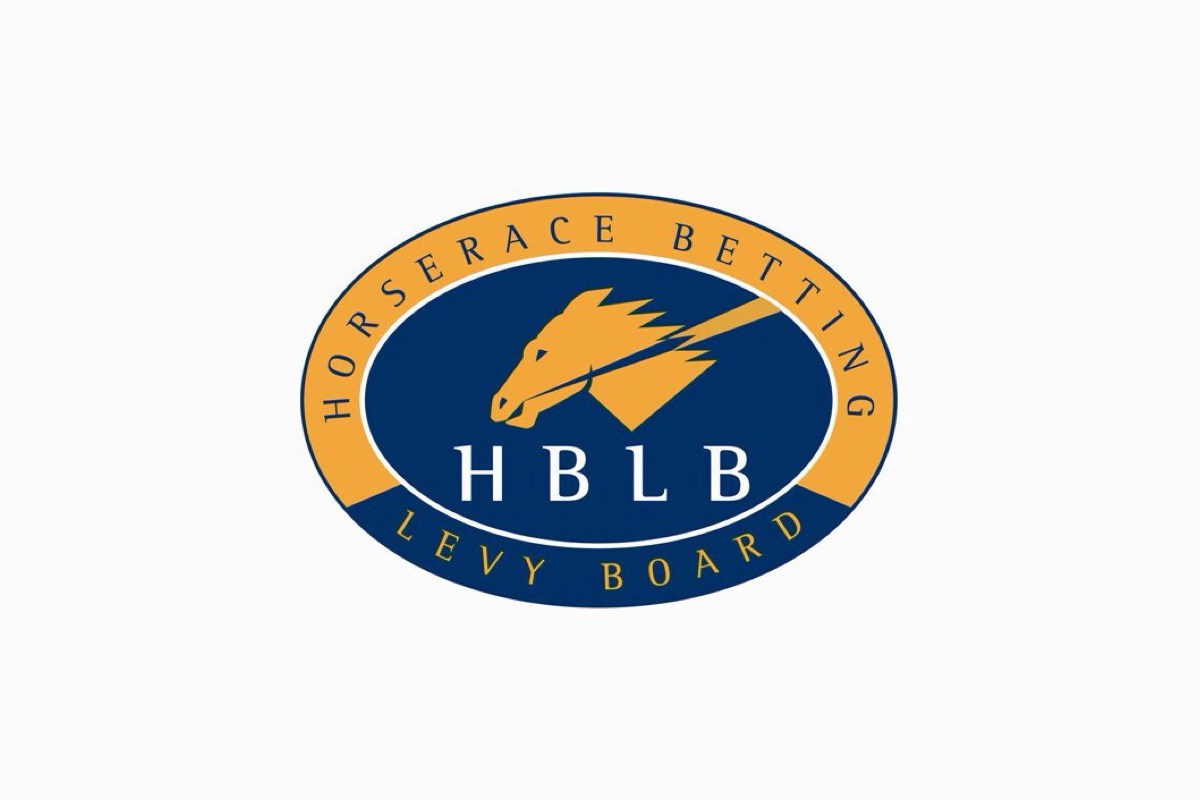Latest News
British Racing Receives £21.5M from UK Government’s Sport Winter Survival Package

British racing’s leaders and the Horserace Betting Levy Board (HBLB) have announced the details of HBLB’s agreed deployment of £21.5 million of loan funding secured from the Government’s Sport Winter Survival Package (SWSP), with racecourses and participants set to benefit as the sport continues its recovery from the COVID-19 pandemic.
British racing has been impacted by well over £400m in lost racecourse revenues since the start of the pandemic and a reduction of over £65 million paid out as prize money to participants in 2020 (41% reduction). The sport continues to be significantly affected by the limited number of spectators allowed.
The money is being lent by Government to the Horserace Betting Levy Board (HBLB) rather than to any constituent body of Racing as a consequence of the sport’s particular governance structure and the HBLB’s role in providing central funding to the costs of race-day regulation, equine welfare and industry training. The loan will need to be repaid from future Levy returns.
The SWSP was launched by the UK Government in late 2020 with the stated aim of supporting “the immediate future of major spectator sports” that have suffered revenue losses as a result of the absence of spectators. British racing developed its expenditure proposal to the HBLB with the Government’s overarching objective in mind.
£7.5m support to aid British racing’s international competitiveness
£7.5m will be utilised to enhance prize money for the 12 months from July 2021, in such a way as to support engagement levels and maximise the retention of horse numbers in 2021 and beyond. The allocations will be split approximately 60% to Flat racing and 40% to Jumps, in line with the composition of the fixture list and the HBLB’s historic funding split, and will be targeted to support the upper tiers of racing and developmental races.
Support of Novice and Maiden races
The following Novice and Maiden races will receive additional support in the form of fixed grants to top-up prize-money, worth over £3.5 million:
On the Flat, Classes 3, 4 and 5;
Over Jumps, Classes 3 and 4
Support for such races is designed to ensure the benefit to participants is felt as widely as possible, with amounts for each determined by race type and class, with the payments added on top of the minimum value.
Support for Black Type races
Minimum values of Black Type races will not be changed but additional funding will be provided to races run above the minimum value, with every £1 of prize money offered above that amount unlocking an additional £1 of matched funding, up to a maximum amount determined by race class. These races will be:
On the Flat, Group 2, Group 3 and Listed Races;
Over Jumps, Grade 1 and Grade 2 races, including for Novices
The additional funding from racecourses to unlock these matched amounts could deliver an extra £2.5m of prize money on top of the £7.5m allocated, ensuring the extra funds are used to deliver the largest possible increase in the prize-money values of Black Type races.
Support for racecourses
Racecourses have suffered financially not only as a result of the original lockdown but the subsequent absence of spectators and so, with a view to supporting their immediate future, the plans will see a further £7.5m deployed to support the raceday integrity costs incurred at those fixtures. This will be in addition to the existing support provided by the HBLB for the regulatory and integrity costs of fixtures.
The current raceday services grant from the HBLB to racecourses of £12,571 per fixture partly covers the BHA fixture fee of £15,341. In addition, racecourses incur other raceday integrity-related costs totalling approximately £10,000 per fixture at Flat meetings and £6000 at Jumps meetings.
Under the plans for the SWSP loan, an additional payment of £5000 will be added to the raceday services grant from 1 July 2021 to 30 June 2022.
Minister for Gambling and Lotteries John Whittingdale said: “Horse racing is part of our national life. We have stepped in to provide £21.5 million as part of the Sports Survival Package, to help get the sport back on track, secure its future and retain its place on the world stage.”
Julie Harrington, Chief Executive of the BHA, said: “British racing is grateful for this vital support from the Sport Winter Survival Package. We much appreciate the assistance of the Levy Board in agreeing to take on the loan and work with racing to agree how the money is best used and distribute using existing funding processes.
“Plans for the deployment of these funds have been designed to target the areas where we have seen a decline in horses in training and provide confidence in the future to our investors.
“Britain is rightly proud of its unique and world-leading racing heritage. But it is clear that with competition around the globe increasing, this is not sufficient to attract the best in the world to be trained and raced here. Ensuring that prize-money is competitive helps ensure that Britain has the best horses, which benefits everybody who loves the sport.
“It is also important that we recognise the contribution and sacrifices made by trainers and jockeys, and the loyalty of their owners, that have combined to keep racing going during the pandemic.
“Vital to the overall success of British racing are our unique racecourses, whose staff have also worked so hard since racing resumed to ensure we remain compliant with Covid rules and guidelines. Supporting their financial recovery is an important part of this plan and will help to ensure our races retain their place as being at the forefront of the global racing scene.”
David Armstrong, Chief Executive of the Racecourse Association (RCA), said: “Racing and racecourses in particular are very grateful to Government for this vital funding boost for the sport in very difficult times. I would also like to thank Sport England for their tireless advice and support in helping us unlock this funding. We are especially grateful to the Levy Board for stepping in and helping us overcome some of the structural challenges we faced in accessing the SWSP – yet another example of their support during the pandemic.
“Racecourses continue to incur significant integrity costs in putting on Racing on a daily basis and this additional support will be very beneficial at such a sensitive time and during the recovery phase over the next 12 months.”
Charlie Liverton, Chief Executive of the Racehorse Owners Association (ROA), said: “The Sports Winter Package loan will provide a much-needed enhancement to prize-money levels as British Racing, along with other major sports, recovers from the impact of COVID-19. It is well noted that owners spend in excess of £30m a month on training fees to ensure that the race programme is fulfilled, along with jockeys riding fees of around £15m per year. We are grateful to have been able to resume behind closed doors for much of the pandemic, albeit for much-reduced prize-money levels, the impact of which has been felt by owners, trainers, jockeys, stable staff and breeders.
“The resilience of owners is such that overall, horses in training numbers are higher than they have been at any time over the past five years. However, it must be recognised that British Racing does have a problem with the number of two-year-olds entering training. It is a concern that the numbers are down on previous years with domestic and international owners choosing to have their horses trained in overseas jurisdictions because of the higher levels of prize-money on offer.
“Prize-money, and its equitable distribution across the participants, is critical to the retention and future growth of owners and the number of horses in training, which in turn will determine British Racing’s standing amongst overseas racing jurisdictions. We are therefore grateful to Government for providing British Racing with much needed and very welcome financial support.”
Paul Darling, Chairman of the HBLB, said: “HBLB is pleased to announce that it has accepted a ten-year loan of £21.5 million from the Government’s Sport Winter Survival Package. This is in keeping with our desire to provide over and above support to the sport in this exceptionally difficult time.
“HBLB’s involvement came about after Racing indicated that there were structural difficulties with Racing taking up the Government’s support and that it considered HBLB the most appropriate vehicle to do so, which would benefit the whole of the sport and that this secondary model was essential if the package was to help the wider industry.
“HBLB then invited Racing’s suggestions as to how the money should be spent in accordance with HBLB’s statutory duties. The Board considered the proposals and sought detailed reassurance from Racing that the money would be properly and appropriately distributed. The Board accepted Racing’s joint submission and assurances.
“The Board had very much in mind that this money is a loan from Government and not a grant. The discussions involved consideration and agreement of how the money being spent is to be repaid. It is critical that the wider sport fully understands that the effect of this arrangement is that the amount of Levy available to spend in future years will be reduced.
“Over the ten-year repayment period, with repayments required in years three to ten, the loan will carry an interest charge of £2.6m. The total repayments of around £24m will be made out of future Levy years’ receipts over that period through a top-slicing of the Board’s allocations to prize-money and raceday services as the first calls on grant expenditure.”
Powered by WPeMatico
EU gambling policy
Romania Proposes Raising Gambling Age to 21 and Restricting Online Advertising

Reading Time: 2 minutes
Romanian lawmakers have introduced new legislative proposals aimed at tightening gambling access and advertising rules, particularly to protect young people. The bills, submitted by MPs Raluca Turcan (PNL) and Diana Stoica (USR), would raise the minimum legal gambling age from 18 to 21 and restrict online gambling advertising between 06:00 and 24:00.
Under the proposals, individuals under the age of 21 would be prohibited from participating in gambling activities, while gambling ads would be banned across online platforms during daytime hours. The legislation also seeks to outlaw the use of influencers, athletes and public figures in gambling promotions.
Protecting young audiences
“We have an obligation to protect our children from the threat of gambling,” said USR deputy Diana Stoica, citing studies showing early exposure to slot machines and online betting among Romanian minors. According to Stoica, brain development, particularly in areas linked to impulse control and decision-making, continues until around the age of 21, making younger individuals more vulnerable to gambling addiction.
“One in four adolescents has played on these so-called ‘machines of death’ before turning 18,” she added, arguing that the legislation is a necessary step to reduce risks.
Aligning with European trends
PNL deputy Raluca Turcan called the proposed age increase a “simple change with deep effects,” noting that countries including Portugal, Greece and Moldova have adopted similar measures. She highlighted that individuals aged 18 to 21 often face increased financial pressure and impulsivity as they enter adulthood, making them a key target group for gambling marketing.
“By raising the age threshold, we protect young people during a vulnerable stage,” Turcan stated, referencing international examples where similar policies reportedly reduced early-age indebtedness and problem gambling cases.
Tighter ad rules and warning messages
The draft legislation further proposes:
-
A complete ban on online gambling advertising between 06:00 and 24:00
-
A ban on influencer and public-figure participation in gambling promotions
-
Mandatory visible harm-prevention warnings across digital and physical gambling environments, modeled after tobacco and alcohol regulation
The measures would amend Romania’s existing legal framework under Emergency Ordinance 77/2009.
What comes next
The bills will now proceed through the legislative process, including debate and committee review. If adopted, the changes would introduce some of the most restrictive gambling-advertising and access rules in the region.
The initiatives reflect an ongoing trend across Europe, where regulators are increasing focus on consumer protection, youth safeguards, and advertising limitations in the gambling sector.
The post Romania Proposes Raising Gambling Age to 21 and Restricting Online Advertising appeared first on European Gaming Industry News.
Digitain
Digitain Group Founder Honored with Outstanding Contribution to Gaming Award at SiGMA Central Europe 2025

Reading Time: < 1 minute
Digitain Group is proud to announce that its Founder, Mr. Vardges Vardanyan, has been recognized with the Outstanding Contribution to Gaming Award at SiGMA Central Europe 2025.
For over 26 years, his vision and leadership have brought remarkable value to the iGaming industry — driving innovation, setting new standards in technology and compliance, and championing a culture of responsibility and integrity that continues to elevate the entire iGaming ecosystem.
Vardges Vardanyan, Founder of Digitain Group, commented: “I am deeply honored to receive this special award at the SiGMA Central Europe. This recognition is not only a personal milestone but a reflection of the dedication, innovation, and integrity that highlight Digitain Group’s vision. For over two decades, our mission has been to empower partners with technology that drives progress and responsibility across the industry. I am extremely proud of what we’ve built together — and even more inspired by what lies ahead as we continue to evolve.”
As a global B2B technology provider, Digitain Group remains dedicated to creating, delivering, and enhancing advanced software solutions that empower partners worldwide. Digitain’s platforms, products, and services are built to provide operators across diverse markets with reliable, flexible, and secure iGaming solutions.
With over 5,000 professionals and offices in Armenia, Romania, Malta, and Spain, and with an upcoming expansion into LatAm, Digitain continues to drive forward with the same passion and purpose inspired by Mr. Vardanyan’s legacy.
The post Digitain Group Founder Honored with Outstanding Contribution to Gaming Award at SiGMA Central Europe 2025 appeared first on European Gaming Industry News.
Best Marketing Campaign 2025
SOFTSWISS Wins Best Marketing Campaign Award in iGaming

Reading Time: 2 minutes
SOFTSWISS, a global tech leader in iGaming solutions, has won the Best Marketing Campaign 2025 title at the SiGMA Central Europe Awards for its ‘Hungry for Success? Dive in with SOFTSWISS’ campaign. The award recognises outstanding creativity, innovation, and execution in marketing campaigns that drive measurable engagement and have a significant industry impact.
The campaign made its debut at ICE Barcelona 2025, where SOFTSWISS introduced the image of a shark as a symbol of its strength, precision, and the drive to stay ahead. It encouraged partners to ‘dive in’ and grow together with SOFTSWISS, reinforcing the brand’s position as a technology leader in iGaming.
Alongside an interactive stand experience, the campaign featured a collaborative art performance by a renowned Spanish street artist Slim Safont, who created a striking shark mural live at the entrance of the expo venue. This activity reinforced the campaign’s message, leaving visitors with an unforgettable experience of interacting with the SOFTSWISS brand.
Across digital channels, ‘Hungry for Success’ achieved exceptional results, delivering strong visibility and engagement on LinkedIn, Instagram, and Google Ads. The campaign outperformed expectations in terms of impressions and reach, while earning outstanding participant feedback for its creativity and execution.
Valentina Bagniya, Chief Marketing Officer at SOFTSWISS, shares: “Hungry for Success isn’t just a campaign – it’s our mindset. It captures who we are as a brand: ambitious, brave, and determined to lead. Winning at the SiGMA Central Europe Awards proves that when creativity meets clarity and conviction, it resonates and delivers real results.”
Earlier in 2025, the company received the Best Marketing Campaign award for its ‘Cheers to 15 Years’ anniversary concept at SiGMA Africa. Later in the year, SOFTSWISS earned double recognition at the EGR Marketing & Innovation Awards. The team was named Marketing Team of the Year for its creative use of data and technology, while Valentina Bagniya, CMO at SOFTSWISS, was honoured as B2B Marketer of the Year for transforming the company’s marketing function into a global brand powerhouse.
Expanding its influence, SOFTSWISS has released the 2026 iGaming Trends Report, the fourth edition of its annual data-driven study. The ebook provides fresh insights into the industry’s future for operators, suppliers, and industry stakeholders. Visitors of the SiGMA Central Europe Summit can learn more about these trends during the 2026 iGaming Trends Marathon, which will take place on 5 November 2025, from 12:00 to 16:00, on the People, Partners & Performance Stage.
About SOFTSWISS
SOFTSWISS is an international technology company with over 15 years of experience in developing innovative solutions for the iGaming industry. SOFTSWISS provides comprehensive software for managing iGaming projects. The company’s product portfolio includes the Casino Platform, the Game Aggregator with over 36,700 casino games, Affilka Affiliate Platform, the Sportsbook Platform, and the Jackpot Aggregator. The expert team, based in Malta, Poland, and Georgia, counts over 2,000 employees.
The post SOFTSWISS Wins Best Marketing Campaign Award in iGaming appeared first on European Gaming Industry News.
-

 Latest News5 days ago
Latest News5 days agoBoomerang Partners has announced a gift auction at their booth during the upcoming SiGMA Europe 2025 in Rome
-

 Asia5 days ago
Asia5 days agoNagaWorld Achieves Exceptional Great Place To Work Certification with Near-Perfect 95% Trust Index Score
-

 Australia6 days ago
Australia6 days agoRTG Global Awards to be Presented During Regulating the Game 2026 Gala Dinner on 10 March 2026
-

 Amusnet6 days ago
Amusnet6 days agoAmusnet Donates a New RFID System to Sofia Library
-

 Affiliate Industry5 days ago
Affiliate Industry5 days agoMelBet Partners to Bring UFC Champion Kamaru Usman to SiGMA Central Europe
-

 Amusnet5 days ago
Amusnet5 days agoWeek 44/2025 slot games releases
-

 Anton Ivannikov CPO at Playson6 days ago
Anton Ivannikov CPO at Playson6 days agoPlayson unveils brand-new mechanic in Paddy Star: Smash and Win
-

 AUSTRAC5 days ago
AUSTRAC5 days agoAUSTRAC Cracks Down on Cryptolink for Late Reporting





